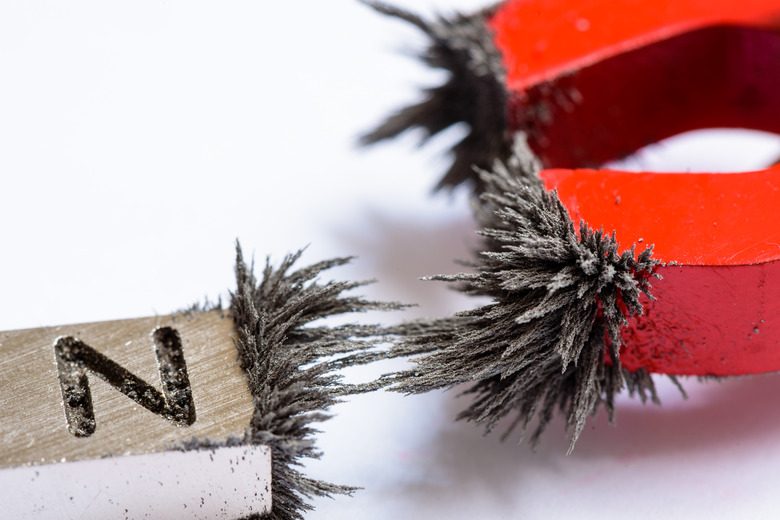Differences Between Ferrimagnetism & Ferromagnetism
Ferromagnetism and ferrimagnetism are both forms of magnetism, the familiar force that attracts or repels certain metals and magnetized objects. The differences between the two properties occur at microscopic scales and find little discussion outside a classroom or science laboratory. Ferromagnets and ferrimagnets are both relatively strong compared to other types of magnets, and they have played significant roles in human history.
TL;DR (Too Long; Didn't Read)
Magnets made of magnetite, a ferrimagnetic material have much weaker magnetic fields than those made of iron and nickel, which are ferromagnetic.
Ferrimagnetism and the First Compass
Ferrimagnetism and the First Compass
Ferrimagnetism occurs in an oxide of iron called magnetite, with chemical formula Fe3O4. The mineral is historically significant because, millenia ago, humans discovered that natural magnetite lodestone always pointed north when floated in water, making the first navigational compass. The magnetism is a result of the alignment of tiny regions in the material called "magnetic domains" in the material. For ferrimagnetism, neighboring magnetic domains lie in opposite directions. Normally, the opposite ordering cancels out the overall magnetic field of an object; however, in a ferrimagnet, small differences between neighboring domains makes a magnetic field possible.
Ferromagnetism: Strong Permanent Magnets
Ferromagnetism: Strong Permanent Magnets
Ferromagnetism occurs in some elements such as iron, nickel and cobalt. In these elements, the magnetic domains align in the same direction and parallel to each other to produce strong permanent magnets. Recently, rare earth elements such as neodymium have been found to greatly intensify ferromagnetism, resulting in powerful, compact permanent magnets.
First Difference: Curie Temperature
First Difference: Curie Temperature
Objects become magnetized when a large number of microscopic magnetic domains align in such a way that their individual tiny magnetic fields add together, forming a larger field. At high temperatures, however, the atoms in the object vibrate and jitter strongly, scrambling the alignment and eliminating the magnetic field. Scientists call the temperature at which this occurs the Curie Point, or Curie Temperature. In general, ferromagnetic materials, which are usually metals or alloys of metals, have higher Curie Temperatures than ferrimagnetic materials. For example, the ferromagnetic metal, cobalt, has a Curie temperature of 1,131 degrees Celsius (2,068 F) versus 580 degrees Celsius (1,076 F) for magnetite, which is a ferrimagnet.
Second Difference: Alignment of Magnetic Domains
Second Difference: Alignment of Magnetic Domains
Some magnetic domains in a ferrimagnetic material point in the same direction and some in the opposite direction. However, in ferromagnetism they all point in the same direction. For a ferromagnet and a ferrimagnet of the same size, therefore, the ferromagnet will likely have a stronger magnetic field.
Cite This Article
MLA
PaulI, O. "Differences Between Ferrimagnetism & Ferromagnetism" sciencing.com, https://www.sciencing.com/differences-between-ferrimagnetism-ferromagnetism-8488277/. 19 April 2018.
APA
PaulI, O. (2018, April 19). Differences Between Ferrimagnetism & Ferromagnetism. sciencing.com. Retrieved from https://www.sciencing.com/differences-between-ferrimagnetism-ferromagnetism-8488277/
Chicago
PaulI, O. Differences Between Ferrimagnetism & Ferromagnetism last modified March 24, 2022. https://www.sciencing.com/differences-between-ferrimagnetism-ferromagnetism-8488277/
